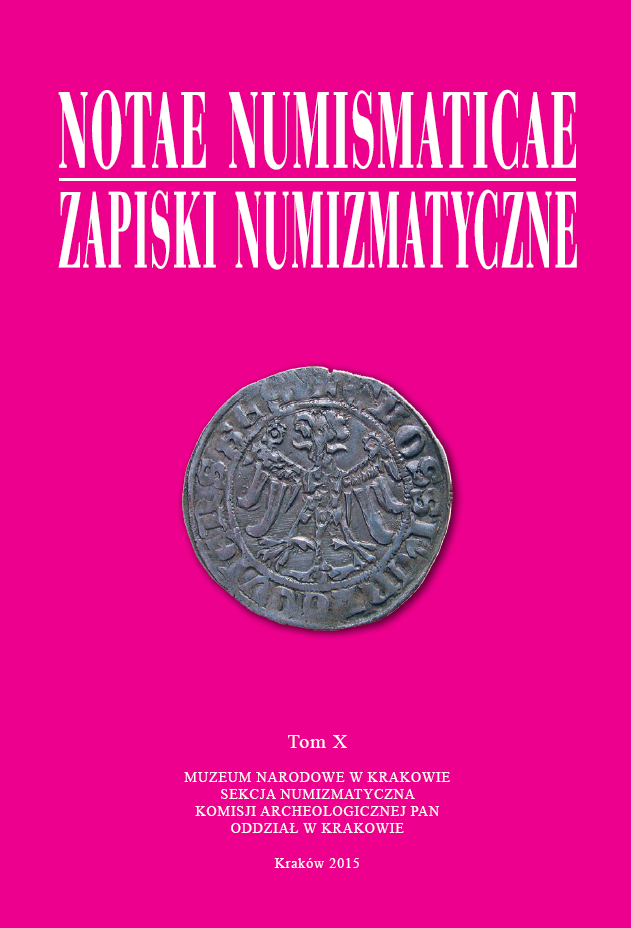An Extraordinary Barbarian Imitationof the 2nd-Century Roman Denarius from Central Poland (Osiny, Baranów Commune, Grodzisk Mazowiecki District)
An Extraordinary Barbarian Imitationof the 2nd-Century Roman Denarius from Central Poland (Osiny, Baranów Commune, Grodzisk Mazowiecki District)
Author(s): Andrzej RomanowskiSubject(s): History, Archaeology, Cultural history, Ancient World
Published by: KSIĘGARNIA AKADEMICKA Sp. z o.o.
Keywords: Osiny;Przeworsk Culture;Roman Coins;coin finds;Barbarians;imitations
Summary/Abstract: The group of 1st and 2nd-century Roman denarii recovered during an archaeological surface survey made in 2008 of a Przeworsk Culture site at Osiny in the Grodzisk Mazowiecki district (Central Poland) includes an eccentric barbarous imitation. An analysis of its obverse and reverse representations identified this specimen as a hybrid, a combination of types never seen on official Roman coins. The obverse representation is one of three empresses – Faustina II, Lucilla, Crispina – the reverse representation is of Mars standing. Since in Roman coinage the depiction of the god of war was reserved for the emperor, the combination on the denarius from Osiny would never have appeared on any regular Roman coin. The imitation denarius from Osiny is the only such hybrid discovered in Poland. Similar coins have been recorded in Ukraine and Moldova. This type of hybrid, albeit with a combination of other obverse and reverse types, has been noted in northern Europe. Some imitative issues of this kind, recorded on Gotland,have been die-linked to coins discovered in Ukraine and the Danube region. Taking his cue from findings of researchers concerning the place of manufacture and the pattern of dissemination of imitations of Roman denarii the author goes on to argue that the Osiny denarius was manufactured locally. Other Roman coins have been recovered in the same region, most notably in the Drzewicz Nowy hoard. The coins found in this deposit would have provided the model for the obverse and the reverse of the Osiny denarius, its maker would have been recruited from among local, skilled craftsmen who presumably were not in short supply in the Mazovian Centre of Metallurgy which operated in this area during the Roman Period. The possible function of the barbarous imitative denarius within the Barbarian community is examined, but without much success.
Journal: Notae Numismaticae. Zapiski numizmatyczne
- Issue Year: 2015
- Issue No: 10
- Page Range: 115-130
- Page Count: 16
- Language: English

